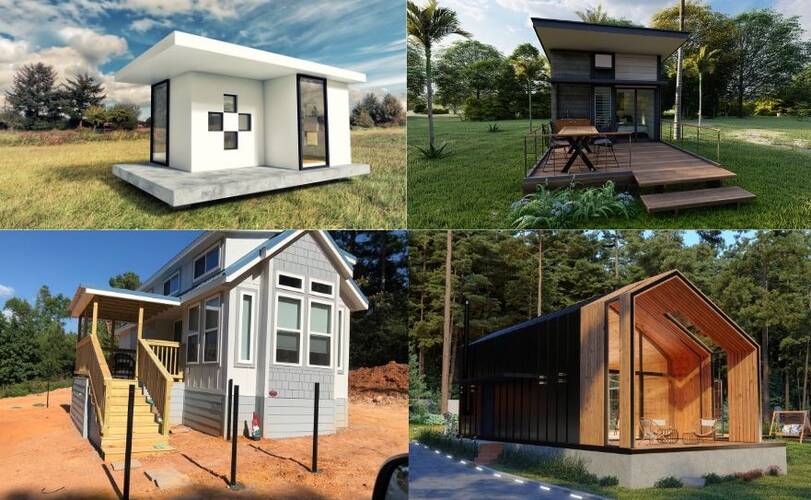
Tiny Homes Trend: Why downsizing is Gaining in Popularity
The tiny home movement is a growing trend driven by several factors, including financial considerations, environmental awareness, and the desire for simpler living. Tiny homes, typically defined as houses under 500 square feet, offer a minimalist lifestyle that appeals to those looking to reduce living costs, downsize possessions, and prioritize experiences over material goods. This movement gained momentum in the 2000s, as housing prices in many regions soared, leaving many unable to afford traditional homes. Tiny homes present a more affordable option, with costs often ranging from $20,000 to $100,000 depending on size, customization, and location.
Additionally, many tiny home enthusiasts are motivated by sustainability. These homes require fewer materials to build and consume less energy, reducing their ecological footprint. Often built with eco-friendly materials, they can be equipped with solar panels, composting toilets, and rainwater harvesting systems, making them an attractive option for those looking to live off-grid or reduce their environmental impact.
Socially, the movement reflects a broader cultural shift towards minimalism and intentional living. Tiny homes encourage people to focus on the essentials and live with less clutter, promoting a more mindful approach to consumption. Many tiny home dwellers report that the lifestyle allows them more freedom—both financially and geographically—as many tiny homes are mobile and can be moved to different locations.
However, zoning laws, building codes, and a lack of infrastructure for tiny homes in some areas remain challenges to wider adoption. Despite these hurdles, the movement continues to grow, with increasing interest from people seeking affordable, eco-friendly, and flexible housing solutions that align with their values of simplicity and sustainability.
Oakstrand Featured Home Listings
- Home
- About
- Blog
-
Blog
- Why Should I Paint Before Selling My Home?
- Importance of Maintaining HVAC System
- Xeriscape
- Why Should I Use a Real Estate Agent to Sell My Home?
- Tax Benefits of Home Ownership
- Tips for First -Time Homebuyers
- Why Staging Helps the Home Selling Process
- Fun and Interesting Facts About the 4th of July You Probably Didn't Know!
- Understanding Mortgage Options
- The Funny Thing About Saturday
- Home Renovations That ADD Value
- Real Estate Market Trends in Jacksonville, Fl
- Choosing the Right Neighborhood - Important Factors to Consider
- Eco-Friendly Home Features
- Common Mistakes to Avoid When Selling Your Home
- Benefits of Buying Investment Property
- What to Look for During a Home Inspection
- Understanding Property Taxes
- Benefits of Home Ownership
- Navigating the Closing Process, What to Expect on Closing Day
- The Lifestyle Benefits of Home Ownership
- Fun and Unique Aspects of Real Estate
- Legal Considerations in Real Estate Transactions
- Tips to Spruce Up Your Home for a Quick Sale
- Adding Fall Foliage to Your Landscape
- Welcome Fall
- Last Minute Hurricane Preparedness
- Quirky Home Design Trends You Won't Believe are Popular
- Real Estate Myths Busted: What Buyers and Sellers Often Get Wrong
- Homes with a Story: Famous Houses with Fascinating Histories
- Tiny Homes Trend: Why downsizing is Gaining in Popularity
- Pet-Friendly Homes: How to Create the Ultimate Space for Your Furry Family
- Halloween Origin Story
- The Ultimate Housewarming Gift Guide for Every Type of Homeowner
- Humorous Side of Being a Real Estate Agent
- What Features Have Instagram Appeal in a Dream Home?
- Mastering Finding Your Next Home through Virtual Tours
- Fun Ideas for Entertaining Your Holiday Guests
- 25 Fun Ways to Celebrate New Year’s Eve at Home | Blog
- Top Bucket-List Items Requested by Homebuyers
- Want Some Easy Tips for Keeping Your Home Clean?
- Things You Can Do to Freshen Your Home for Springtime | Blog
- Spring Cleaning and Home Staging Tips to Boost Your Home’s Value | Blog
- Plan Ahead for Your Easter Gathering with These Fun Easter Games
- How to Make the Best Easter Ham this Year | Blog
- Contact
© 2025 Oakstrand Realty Group
DMCA Notice | Terms & Services | Privacy Policy | Accessibility Statement
EQUAL HOUSING OPPORTUNITY


Oakstrand Realty Group
111 2nd Avenue NE, Suite 345, St Petersburg , FL 33701
Mobile: 904-247-6857
lisacmullis@gmail.com


